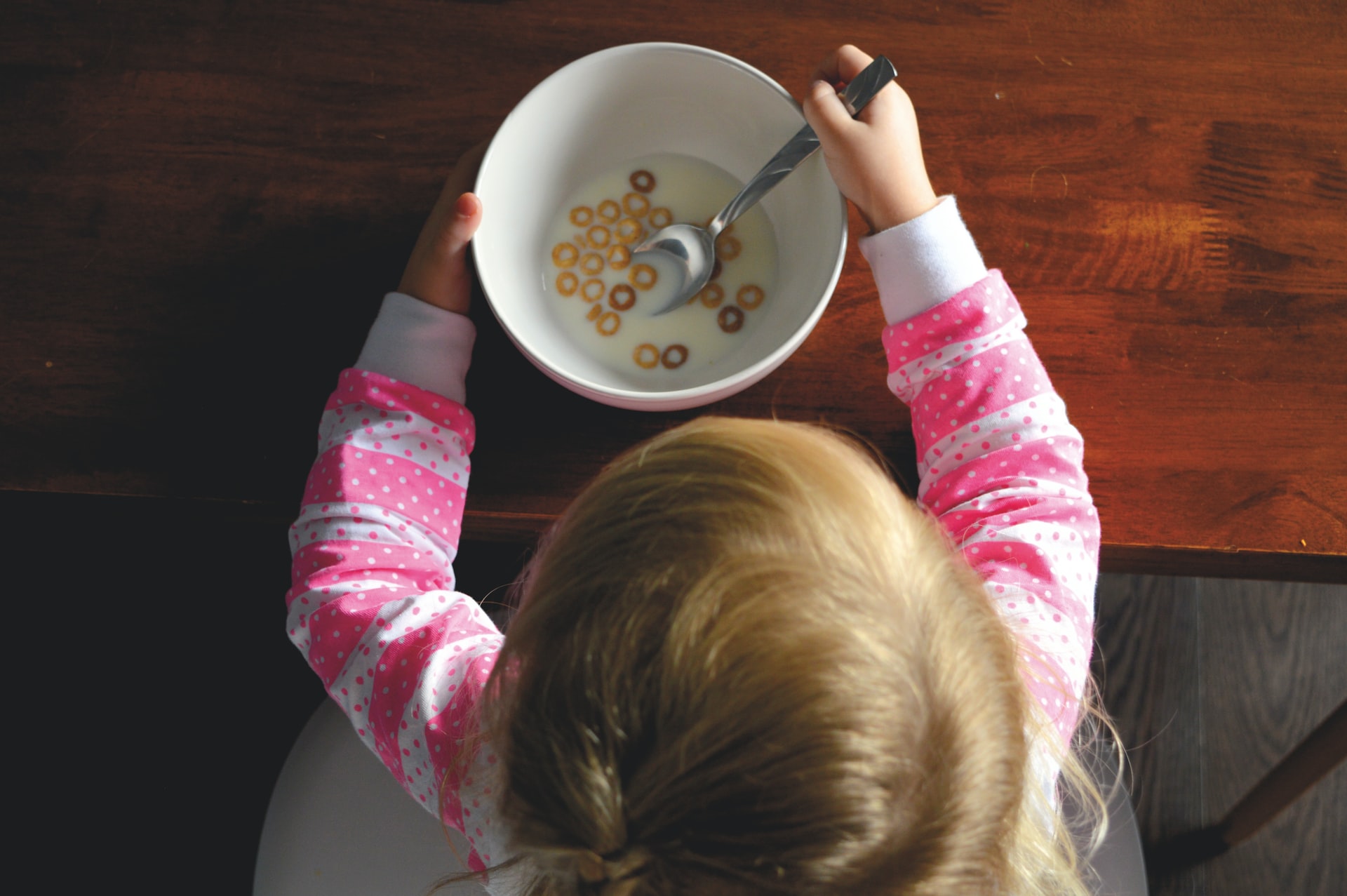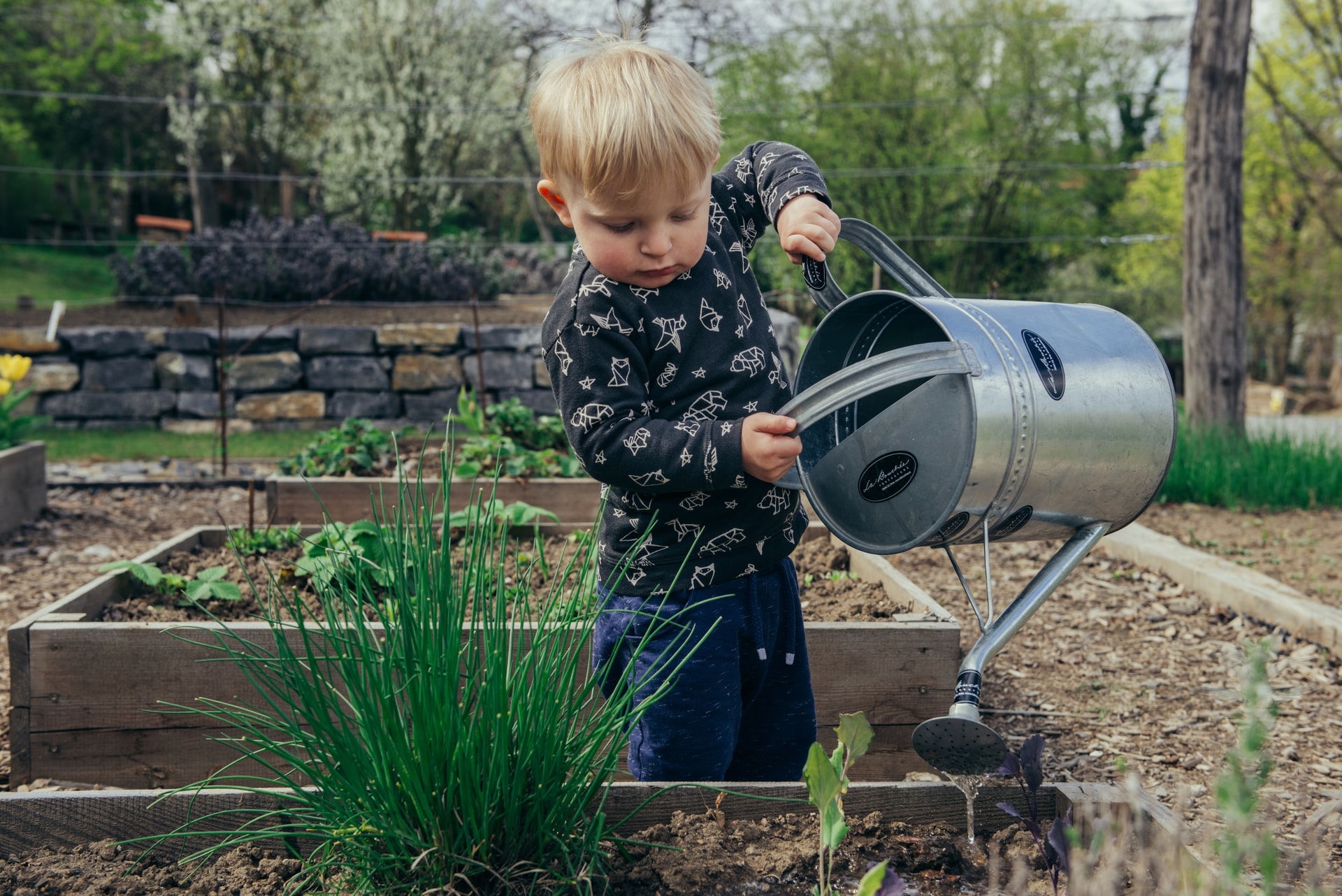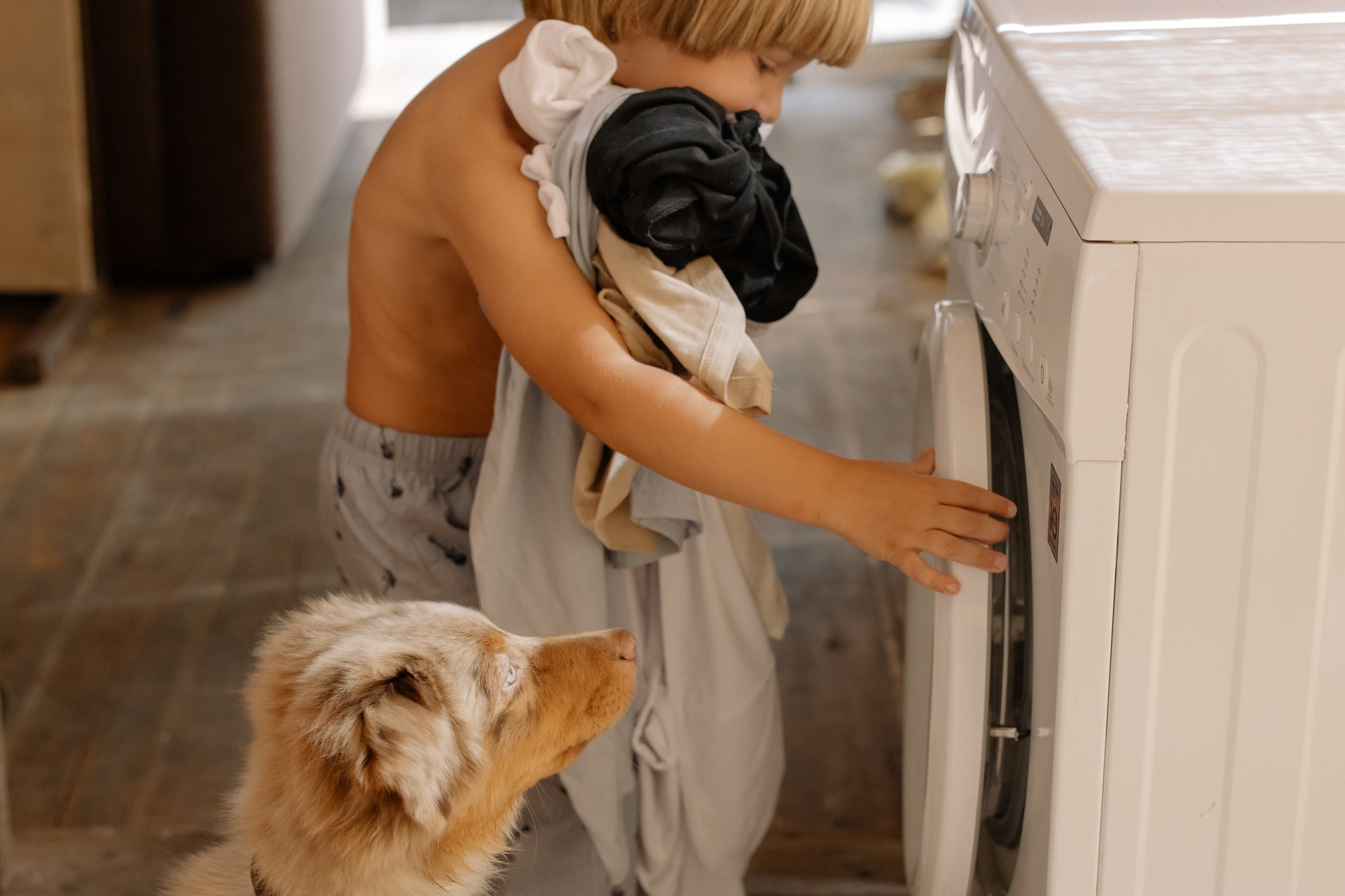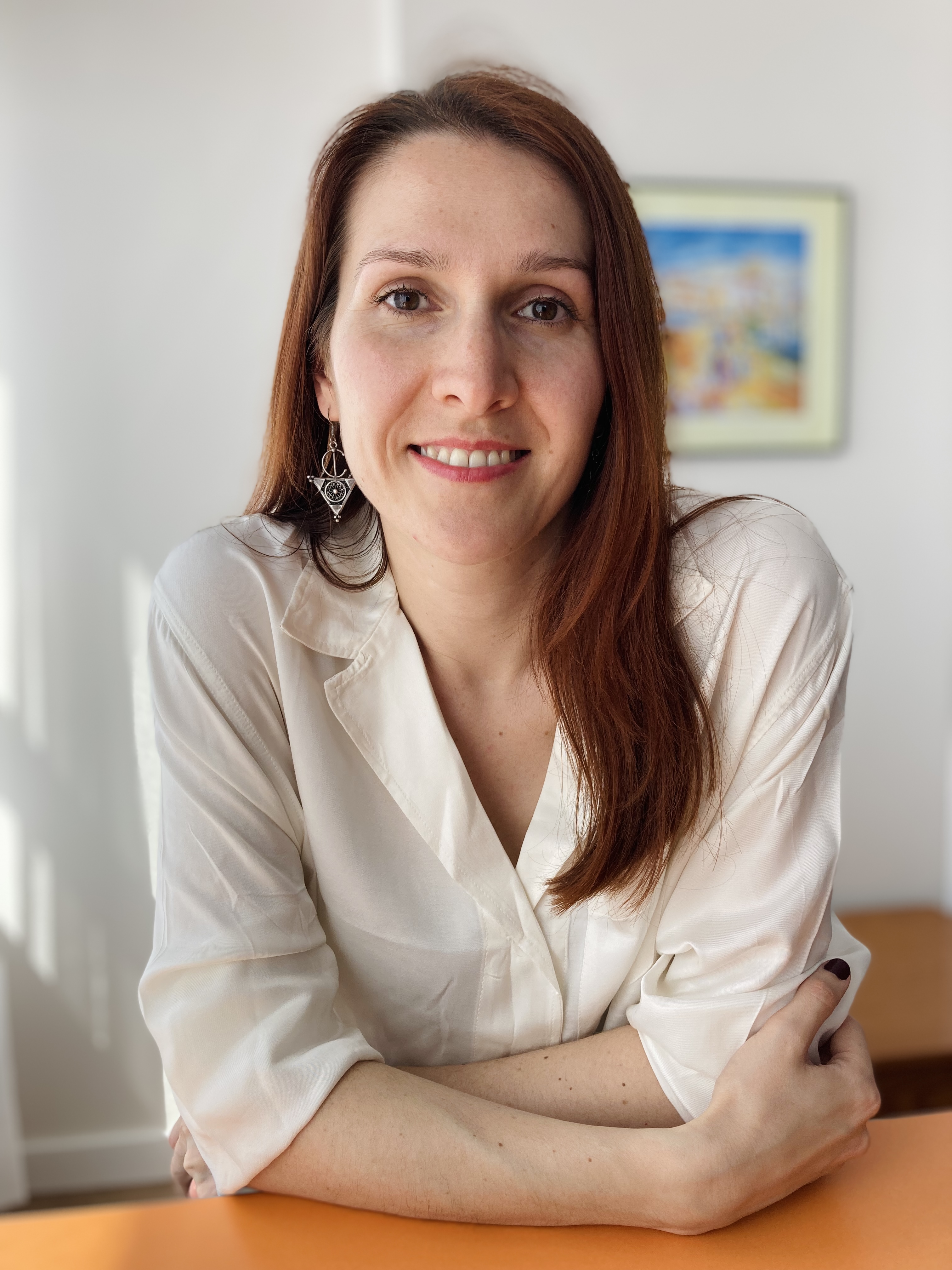To do something on your own and to succeed. I don’t think there’s anything more efficient than this in building self-confidence. And a child who builds himself and learns about himself is the one who most needs a positive self-image, one that shows them they can succeed.
Independence is among the most important purposes to keep in mind when talking about the child’s development. By independence I mean the ability to do things on your own, without always depending on someone else to do them for you. That does not mean you don’t need help or that you can’t ask for it. Independence means being able to do certain actions on your own, actions that according to your level and capacities, allow you to develop, to explore and to care for yourself.

Photo by Providence Doucet on Unsplash
To a 3 year old child, this independence is eating on their own, putting on certain items of clothing (pants, blouses, jacket), preparing a simple snack (cereals and milk, a sliced banana) and contributing to preparing and maintaining order in their environment (putting away their toys, setting the table, putting their clothes in the closet).
But this independence doesn’t happen over night and doesn’t appear without being nurtured, without a proper environment and without adults who are capable of creating contexts that allow this acquiring of independence.
Independence doesn’t manifest in just one plane, but it extends to all the aspects of a child’s life and has a great impact on their development and the effects will continue to be visible for years to come.
What does it mean that independence manifests in more than one plane? Firstly, independence is the effect of a dynamic and gradual process. Secondly, independence requires specific contexts in order to to develop.
What I mean by dynamic process is that a child needs to do purposeful, real activities on their own, by using their hands, in order to develop independence.
Therefore, by just observing how others do certain things, how they eat, walk, wash, get dressed, a child won’t develop independence. By observing, the child will assimilate ways of doing things, he’ll read the instructions manual. But if he won’t do those activities himself, he won’t be able to develop abilities, therefore neither independence. It’s like reading the instructions to set up an Ikea bed, but not doing anything to put those instructions in use in order to assemble the pieces and obtain a bed.
What I mean by gradual process is that in order to be independent, the child will go through different stages and will build on previous knowledge.
A 1,5 year old for instance, will have a weak control over the way he holds a spoon and he will guide it to his mouth, but won’t have the precision that comes from practicing that movement, precision that a 3 year old has, since he has practiced it many times. A 2 year old can pull up his pants, but he might need help pulling them all the way up, stopping around the knee area. Through practice, step by step, he’ll manage to pull them all the way. By acquiring good coordination and strength of the hand muscles, a 2,5-3 year old will be able to peel a banana and slice it.

Photo by Karo Kujanpaa on Unsplash
You’ll notice I have mentioned only examples of independence regarding movement and physical abilities. This type of independence is called functional independence and allows you to perform certain movements necessary to satisfy your basic needs and to to support your bodily functions. A child who can use the toilet on his own, who can eat on his own and change his clothes, has a high level of functional independence. A child who is still wearing a diaper and who is being fed by the adult and depends on the adult to fulfill certain needs, has a low level of functional independence.
The amazing part of the fact that independence is the result of a gradual process is that by acquiring functional independence, the child also acquires an emotional independence.
So how does this happen?
Having various opportunities to use his hands in order to discover the world, the child builds himself and becomes more and more aware of the purpose of things around him, more and more aware of himself and of what he can and can’t do yet.

Photo by Filip Urban on Unsplash
The more often you do something, the more skilled and confident you get. As an adult, the more you paint walls, the better you get at it, the more you sew, the more skilled you are at it, the more you use a computer software, the better you are at using it. Why shouldn’t it be the same for the child? The more contexts we offer the children for them to do things on their own, the more they become more confident, they develop a positive image of themselves, one that shows they are capable of success.
I can’t describe the impact a positive self image has on the long term, being able to influence development, with effects that vary from professional success to balanced inter-human relationships and self love. Even if it may seem superficial to us or it may seem like a small success or an unimportant one, the fact that a 2,5 year old is able to put on his socks on his own is an astounding success! A success that fills his soul and his mind and contributes to building self-trust, initiative and creating a positive image about themselves.

Image by Devanath from Pixabay
Think of this self-image as an empty jar, that needs to be filled or like a canvas that is about to be painted. Each one of the actions the child does on his own, that shows them they’re capable of success, for which the adult has created an appropriate context, is a note in that jar, that says: You can do it!, You did it!, I trust you!. Over the years, when that child will be on his way to adulthood, troubled by a deep transformation and self-discovery, he will be able to look into that jar and find all those notes with positive messages, that will offer him great resources in his adaptation and in knowing himself. That teenager will be able to take the canvas from his pocket and see that it turned into a self-portrait, one he created with every action in which he succeeded on his own, because each success traced a line in his self-image.
But that self-portrait can also be one that doesn’t necessarily offer a positive image. The jar can also be filled with negative messages. How?
The more we interfere in the actions the child can do on his own, the more we cut from his confidence, because the message he hears is : I don’t trust you can do this on your own.
We tell him we don’t believe in him, that he needs someone for everything he wants to do, we cut the roots of his initiative. You may have heard parents sending their children off to school, with messages such as: Why aren’t you more brave?, You’re a big boy now, you’ve got this! Or maybe adults who treat their children’s lack of success in a task as a failure, that is only up to him: Why can’t you manage this?, I don’t understand what is wrong with you!, Why are you crying, it is not a big deal!
But if we were to look behind, we would find children who were not allowed to do even the smallest tasks on their own, who were fed when they could eat on their own, who were dressed and undressed, who didn’t have the necessary contexts to try things on their own. And that is how their self-confidence diminished, their initiative didn’t grow and the first failure for these children will feel like a tragedy, intense and painful.
So, no matter how simple or unimportant it may seem, when you do things on your own, the most basic stuff, when you’re allowed to practice, you reach the conclusion that you can, you gain confidence, you have the courage to try again, you see failure as an opportunity to learn and you feel good being you. All this is emotional independence.
We’re afraid that if we let children do things on their own, they’ll get hurt or we think they won’t be able to do them, we think that they’ll be independent and won’t need us anymore, we’re afraid of stealing their childhood and we say they have plenty of time all their life, we want them to be well and have no burdens. How much are these messages that we tell ourselves about us and how much are they about the child? How much are they connected to our fears and wishes and how much to the child’s needs and well-being?
The child will always need his parents, being independent isn’t equivalent to being apart. If we don’t give them the chance to do the things they are capable of on their own, not only are we not keeping them away from trouble and hardship, but we are also cutting the resources that would help them go through life’s hardships, that will happen eventually anyway. Childhood isn’t just free play, with no purpose, with screaming and running. Childhood is a time in which the child sets the basis of the adult he’ll become, it is work and is an amazing work, that they enjoy and that keeps them balanced and emotionally healthy.
The adult’s role in developing the child’s independence is essential and can make the difference between a child who knows and trusts himself and a child with no initiative, who depends on the adult for everything.
In my next article, I’ll explain in more detail what we can do as adults to foster independence and to help the child get there.

